Imagine if you will, a set of spanners, the ones you use to work on a car engine. But you only have the odd numbers: spanners 1,3,5,7,9. Murphy's Law dictates that you will need a 4 or a 6 spanner on almost every part of the job. Your brother-in-law has the even-numbered spanners, and he is working on his motorcycle. You can hear him cursing, from across the street.
Where am I going with this silly story? The game of 3-cushion has changed, players get stronger, averages go up. The modern 1.500 player does not have better aiming than Raymond Ceulemans had thirty years ago, nor does he have a better stroke or superior concentration. The old man pretty much achieved perfection, in those aspects. What has changed more than anything else, is choice of shot. The players have better tools, and they have MORE tools. They have a spanner ready, even when 7 is too large and 6 is too small.
For many standard positions, the modern player will still use the same solution that Kobayashi would have picked in 1985, or Van Der Smissen in 1990. But there is this "in-between" category of shots, where you are not quite comfortable with solution A, but you don't like solution B either. This is where the school of thought has evolved, mostly under the impulses of Blomdahl in the nineties.
In problem situations, the shot that depends on flair, stroke, speed, the shot that ignores defense and ignores position, has gained in popularity. That shot is do-or-die. It is intended to get you out of trouble by making the point, or at least doing that some of the time. The "old-school" shot that relies heavily on precision and controlled speed, with defense as a major objective, has lost ground.
There are several good reasons to go for an attacking, risky, difficult shot.
- You might make it.
- In about 50 % of those cases, if you are a 1.000 player, or 60 %, if you are 1.500, you are going to make a few more. Add that to the possible rewards.
- If you miss, there's such a thing as "lucky defense". Deduct that from the possible cost.
- And even if you do leave an open position, he could miss it, or only make a single point.
It's a calculated risk, and if the investment is relatively small and the rewards are potentially large, you should take it.
The shift from the old school to the new school in 3-cushion has reduced the use of short-long-short solutions, in favor of long-short-long. Don't get me wrong: the top players are extremely good at playing short-long-short IF THEY HAVE TO, but they have gotten cleverer in finding ways to avoid it. This is what I meant in the headline of the column: be a hybrid guy. You want to play the modern game, but if you are left with nothing but an old-school shot, you want to be proficient at that one as well.
I have three examples for you, to illustrate the development from old school 3-cushion to the modern game. Remember: this is not a matter of: A is wrong, B is right. It's about percentages. Move one of the three balls two inches, and those percentages will change dramatically. Practice both and find out which solution works best for you. This can depend on your particular qualities as a player, and even table / cloth conditions can come into the equation when deciding which shot works best.
Shot 1/old
We all know how horrible it is, to have the third ball frozen on the long rail between diamonds 3 and 4. It's an area of the table that seems to make every shot difficult. Play this S/L/S thin with no english at all? Play it slightly thicker and hold it with a little reverse? Nothing will ever make it easy, and the shot is very sensitive to table conditions.
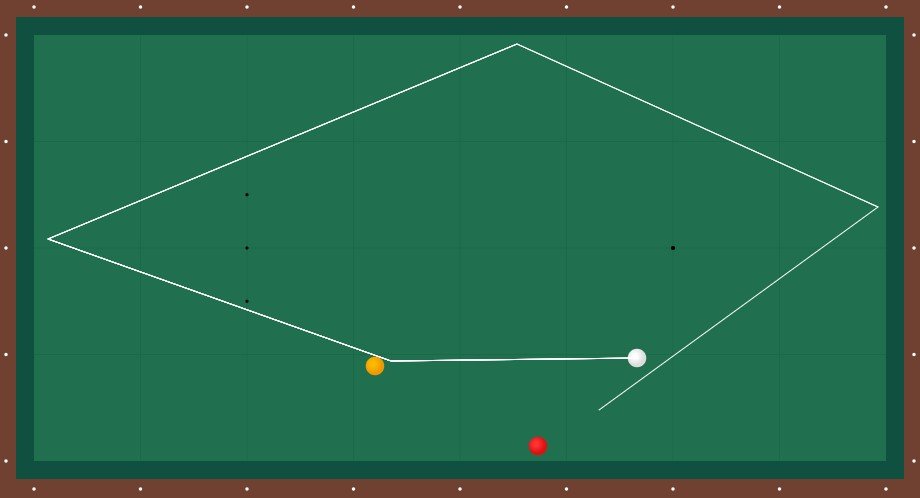
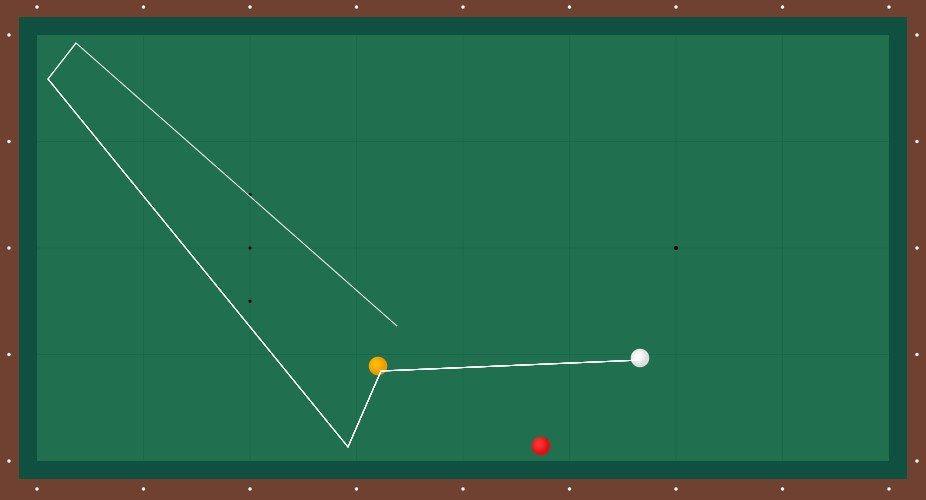
Shot 1/new
Merckx, Sánchez, just to name two guys who are experts at this. They stroke it firm, the cue ball is not allowed to roll before it reaches the object ball. Very little english, a bit of draw. If they make it, it looks like a natural. But believe me, this one takes a lot of practice.
Shot 2/old
Again, this has a lot to do with the placement of the third ball. It is about as bad as it can be, there's almost no way of creating a "large" or double ball. So, the line in the diagram is your perfect hit, and the percentage is very low.
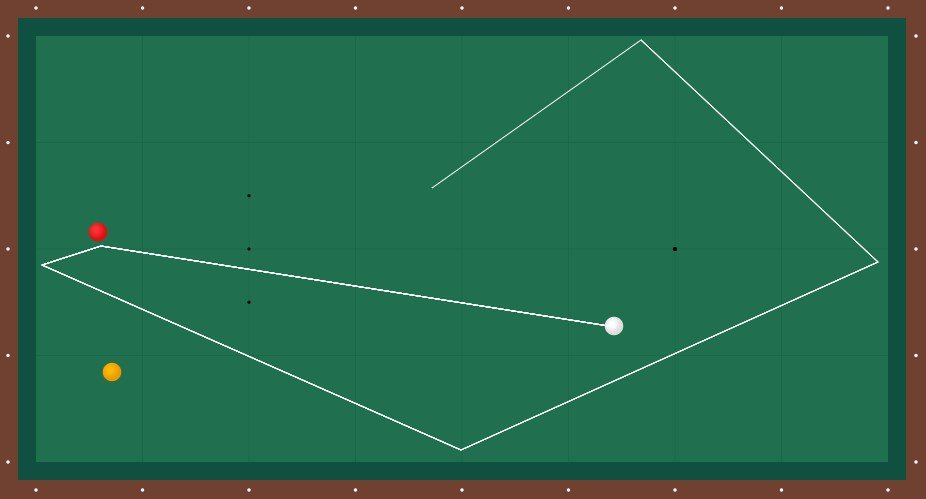
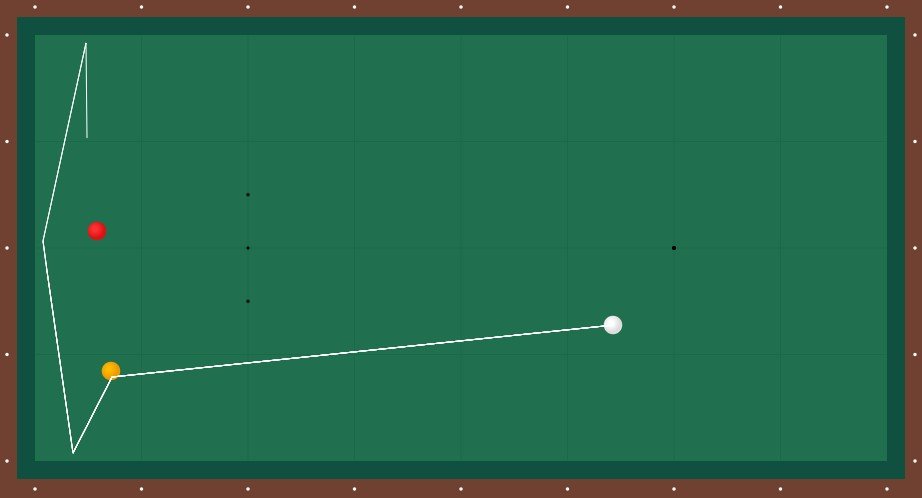
Shot 2/new
Nothing easy about this one either. The player who popularized this "family" of solutions was Dion Nelin in the nineties, and even Blomdahl picked up a thing or two from the talented Dane. The thing to remember when playing this shot, is that using too much of the second ball, and using loads of reverse english will both work against you.
Shot 3/old
The "candle" shot or drop-in that Jaspers plays better than anyone. It's all about feel. Sometimes you can play with no english at all, sometimes you need to help or hold your ball ever so slightly. There's no system. Study diagrams all you want: if you are confronted with this shot in a match, the balls will never be where they were in the diagrams. You're on your own, my friend.
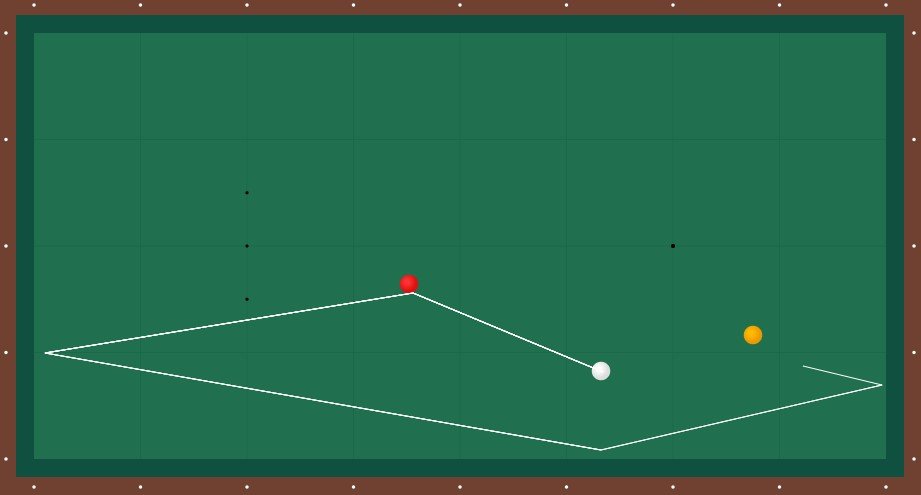

Shot 3/new
Modern top players have discovered that you can make a ball come in extremely short from a L/S/L line if you play with little or no english combined with draw. It takes practice and a very good stroke to play this rather thin, avoid the kiss and come down the table short enough. Why do they play it? The cue ball will have no "carré" at all if they come in L/S/L/L/S, so in many cases they feel they have a "double" ball.
I personally hate this shot and avoid it like the plague. That's one of my prerogatives, as an old fart.
